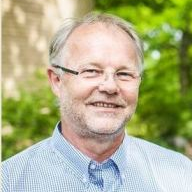Constructed Wetlands for Water Treatment: New Developments
A special issue of Water (ISSN 2073-4441). This special issue belongs to the section "Wastewater Treatment and Reuse".
Deadline for manuscript submissions: closed (31 August 2016) | Viewed by 118895
Special Issue Editors
Interests: Wetlands, wastewater treatment, ecological engineering, plant ecophysiology, paludiculture
Special Issues, Collections and Topics in MDPI journals
Interests: constructed wetlands; wastewater; wastewater treatment plants circular economy; resource recovery technical development
Special Issues, Collections and Topics in MDPI journals
Interests: emergent pollutants; organic pollutants; ecotechnologies; bioremediation; environmental chemistry
Special Issues, Collections and Topics in MDPI journals
Special Issue Information
Dear Colleagues,
Constructed wetlands (CWs) are one of the most interesting eco-technologies with proven efficiency and applications from rural to urban and even industrial settings. The achievements in terms of efficiency and implementation of traditional systems (free water surface (FWS), horizontal subsurface flow (HSSF), vertical flow (VF)) are known and thoroughly documented. However, in recent years, researchers and practitioners have been working on new developments and challenging applications. Various approaches for reducing the area requirements and increasing the capacity of traditional CWs systems have been tested. Varying the hydraulics by recirculation of treated waters, use of fill-and-drain cycles, use of reactive media, and forced aeration are examples of common approaches used to increase treatment capacity. CWs are also being tested for their capacity to tackle new challenges, such as the removal of special and sometimes recalcitrant pollutants, e.g., biocides, pharmaceuticals, and other micro-pollutants, as well as many types of industrial wastewaters. Additionally, our mechanistic understanding of the processes going on inside the CW “black-box”, i.e., degradation pathways and kinetics, the interactive roles of plants, microbes and media, etc., has advanced significantly in recent years. This Special Issue of Water is thought to compile the latest advances in the constructed wetlands treatment technology, both in terms of design optimisations, applications and removal processes. We foresee that the papers compiled in this Special Issue will contribute to further develop and disseminate the CW treatment technology as a reliable and robust water treatment solution.
Prof. Dr. Hans Brix
Dr. Carlos A. Arias
Dr. Pedro N. Carvalho
Guest Editor
Manuscript Submission Information
Manuscripts should be submitted online at www.mdpi.com by registering and logging in to this website. Once you are registered, click here to go to the submission form. Manuscripts can be submitted until the deadline. All submissions that pass pre-check are peer-reviewed. Accepted papers will be published continuously in the journal (as soon as accepted) and will be listed together on the special issue website. Research articles, review articles as well as short communications are invited. For planned papers, a title and short abstract (about 100 words) can be sent to the Editorial Office for announcement on this website.
Submitted manuscripts should not have been published previously, nor be under consideration for publication elsewhere (except conference proceedings papers). All manuscripts are thoroughly refereed through a single-blind peer-review process. A guide for authors and other relevant information for submission of manuscripts is available on the Instructions for Authors page. Water is an international peer-reviewed open access semimonthly journal published by MDPI.
Please visit the Instructions for Authors page before submitting a manuscript. The Article Processing Charge (APC) for publication in this open access journal is 2600 CHF (Swiss Francs). Submitted papers should be well formatted and use good English. Authors may use MDPI's English editing service prior to publication or during author revisions.
Keywords
- treatment wetland
- aerated wetlands
- tidal flow wetlands
- run-off
- microbial electrochemical wetlands
- recalcitrant compounds
- emerging contaminants
- microbial functions in wetlands
- new applications
Benefits of Publishing in a Special Issue
- Ease of navigation: Grouping papers by topic helps scholars navigate broad scope journals more efficiently.
- Greater discoverability: Special Issues support the reach and impact of scientific research. Articles in Special Issues are more discoverable and cited more frequently.
- Expansion of research network: Special Issues facilitate connections among authors, fostering scientific collaborations.
- External promotion: Articles in Special Issues are often promoted through the journal's social media, increasing their visibility.
- e-Book format: Special Issues with more than 10 articles can be published as dedicated e-books, ensuring wide and rapid dissemination.
Further information on MDPI's Special Issue polices can be found here.







